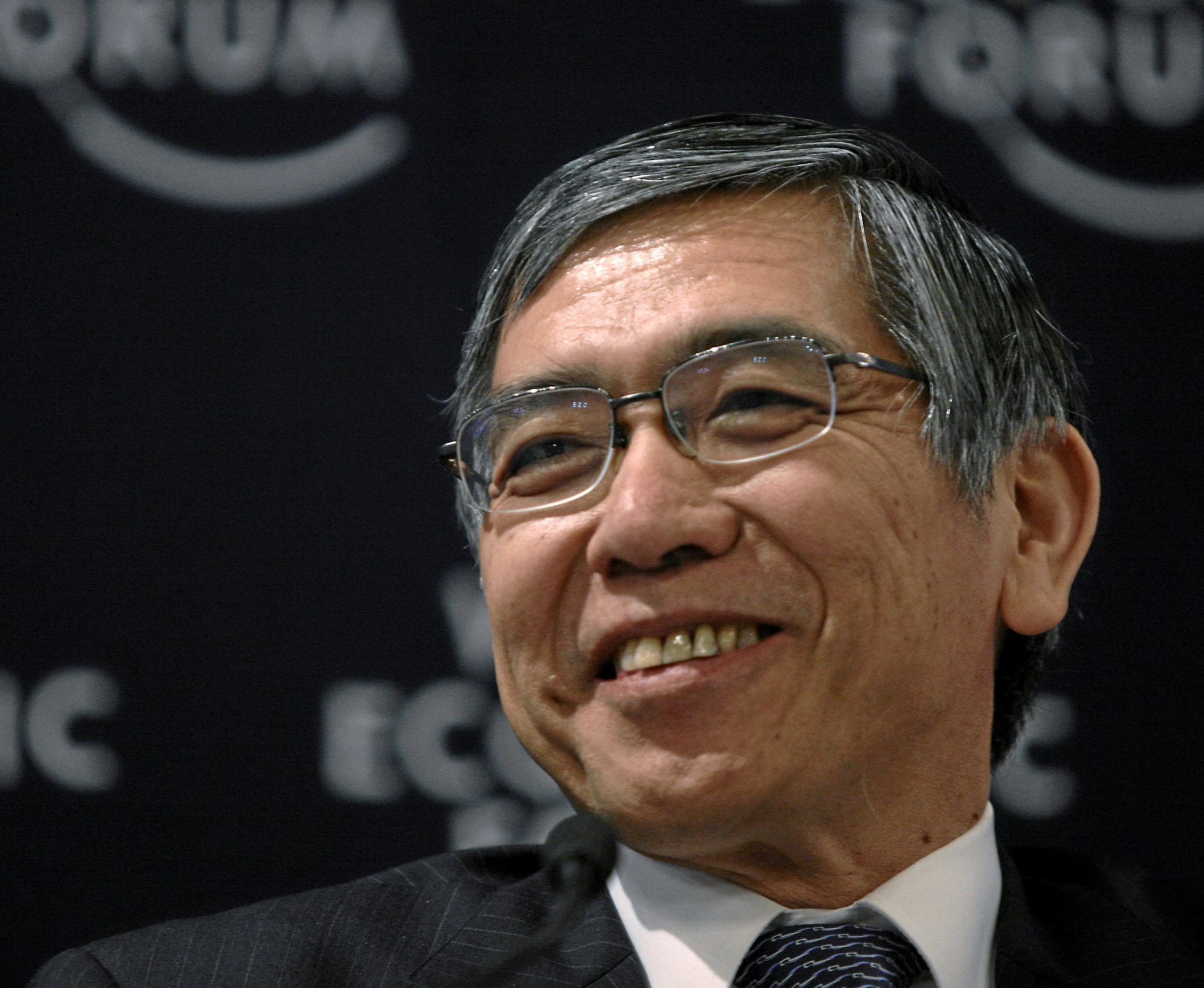Dear Readers,
When you print record amounts of money, you’re going to set new records.
The Dow hit a new record high this week, climbing as high as 14,400. GETCO and Citadel’s HFT algo-trading software were clearly used by the Primary Dealers and the Fed to send the Dow Jones to all-time highs.
The amount of money going into stock funds continued to pour in as investors worldwide placed $7.14 billion in stock funds; the majority of that inflow going into U.S. stocks ($4.95 billion).
In a recent letter I talked about Mass Theory, whereby the pace of the market is not dictated by fundamentals, but by the mass. This week continued to support the theory as the record inflows came on the heels of the Dow’s record closing high of 14,253.77 points on March 5.
The mass always follows the leader, but every leader eventually topples and is replaced by a new one.
While the Dow appears to have set a new record, it is still 16% away from its previous high set in 2007 when adjusted for inflation.
Inflation Theory: If you’re worried about inflation, invest in stocks.
I have spoken about the inflation theory many times before:
If you invest only in stocks, worrying about inflation shouldn’t keep you up at night. Over the long run, a company’s revenue and earnings should increase at the same pace as inflation. I think we’re already seeing that in our markets. As the money supply increases, so have the prices of everything else – including stocks.” – Everything Has Changed, the Equedia Letter, May 2011.
Increasing the money supply causes inflation; those who believe otherwise are out to lunch, or stubbornly believe in the inflation formula created by the Fed (who subsequently wants to print inflation).
Just take one look at the things that affect us most: oil and food prices.
Rising Prices: Canadian Price Inflation
In 2002, the annual average domestic crude oil price was $22.81/bbl; $29.12/bbl when adjusted for inflation. Last year, it was around $93/bbl. Oil is now three times the price it was just 10 years ago.
What about food? 10 years ago, according to the Daily Record, the price of Coca Cola was $0.99 for a 2 litre bottle. Today it’s $1.99.
Let’s take a look at Canadian food prices since the crash of 2008:
January 2009 to January 2013*:
- Round Steak: +13%
- Chicken: +13%
- Eggs: +23%
- Roasted Coffee: +45%
- Sugar: +26%
- Baby Food: +18%
The biggest increase in Canadian food and consumer prices was between the years 2011-2012, during which the Fed’s QE2 injected $600 billion into the economy.
January 2011 to January 2012*:
- Sirloin Steak: +11.7%
- Ground Beef: +15.4%
- Eggs: +15.7%
- Potatoes: +26.1%
- Roasted Coffee: +16.6%
- Sugar: +26%
- Soft drinks, cola type: +18.6%
- Shampoo: +20.6%
- Toothpaste: +23.7%
*from Statistics Canada, Government of Canada
That’s Canadian price inflation. QE3 is currently taking place and can easily grow to be twice as big as QE2. Where will food prices be by the end of this year?
Certain things inflate faster than others. Just because the Fed tells you otherwise, your living habits speak the truth. Consumer prices are going up; as a result, so is the stock market. Venezuela and Japan are prime examples.
But be careful. While this rally has fuel, it can just as easily topple over when prices move too high, too fast; there’s a strong possibility this will happen. In my Letter, The Dramatic Drop from last year, I explained what is currently happening to the flow of money in our system.
The Velocity of Money Revisited
While prices are moving up, they’re most certainly not moving up as fast as it should, given the amount of liquidity in our system.
We’re not experiencing the hyperinflation that many expected because the economic numbers haven’t shown any real signs of growth. If we are experiencing a real rebound and things are growing as fast as the stock market is telling us, then the velocity of money should increase accordingly and reverse trend.
From the Dramatic Drop Letter:
“The velocity of money measures the rate at which money flows through an economy, in other words, how much money changes hands; it has to do with the amount of economic activity associated with a given money supply. It’s also is a key input in the determination of an economy’s inflation calculation.
A higher velocity means the same quantity of money is being used for a greater number of transactions. As a result, it means people are not just making money, they’re spending it. Economies that exhibit a higher velocity of money relative to others tend to be further along in the business cycle; thus, should have a higher rate of inflation, all things being constant.
But the opposite is true of lower velocity. A low velocity means people aren’t spending; thus, the economy struggles and inflation remains low.
Take a look at the graph below that represents the Velocity of MZM (Money Zero Maturity) Money Stock:

This is a measurement of all liquid money within the economy. MZM represents all money in M2, less the time deposits, plus all money market funds.
MZM has become one of the preferred measures of money supply because it better represents money readily available within the economy for spending and consumption.
As you can see, the velocity of the MZM money stock is now at its lowest level since the currency crisis of the 1960s that led to the end of the Bretton Woods system in 1971. The last time we witnessed such dramatic drops in money velocity? The Great Depression.
The Fed and other central banks around the world are trying to avoid another Great Depression scenario. That’s why they are printing so much. They want inflation to happen so they can turn this whole money velocity downfall around.
However, what they’re doing is counterproductive because no matter how much money gets printed, the Fed cannot force people to use it; they can only instill confidence. So the more money they print, the more supply they produce which causes the velocity of money to go further downhill, provided consumer spending remains constant.”
But therein lies a big problem. It will take many years of double digit growth for the money velocity to turn around because there is just too much money in the system. Ultimately, that means only one thing: devaluation.
When money velocity finally reverses its downward course, it will mean the economy is doing great; thus we should all have a lot more money. Sadly, at some point, all that money will be just enough to buy ourselves a 2 litre bottle of Coke.
Japan Up
Exactly a month ago, I said be prepared for Japanese equities to rally as they deliberately move forward to weaken the Yen.
Last week, Japan’s Nikkei 225 Stock Average returned to its pre-Lehman collapse level on Friday for the first time. It has risen more than 10% since I made the call.
I expect this trend to continue because I expect Japan to continue their devaluation.
Currency War Update – China Prepared for War
While the G7 nations spoke calmly about Japan’s monetary actions, China’s influential parties had other words.
As the WSJ reports:
The President of China’s giant sovereign-wealth fund (Gao Xiqing, president of China Investment Corp.) warned Japan against using its neighbors as a “garbage bin” by deliberately devaluing the yen, joining growing international griping about a potential currency war.
Gao Xiqing wasn’t the only one to break words. China’s Li Yining, 82, a Peking University professor and delegate to China’s top advisory body, who also co-wrote a book with China’s incoming Premier Li Keqiang, publicly announced his distaste for the monetary policies of the world’s largest governments.
Via Bloomberg:
We have already taken a position on this before and China doesn’t approve of some countries’ overly accommodative monetary policy,” Li Yining, 82, a Peking University professor and delegate to China’s top advisory body, said at a briefing in Beijing today when asked about Japan’s recent easing. “This is an act of transferring the crisis to others.
The remarks may reflect official displeasure over the yen’s depreciation amid Japanese Prime Minister Shinzo Abe’s campaign for more monetary easing to fight deflation. China is “fully prepared” for a currency war should one happen, central bank Deputy Governor Yi Gang said March 1, according to the official Xinhua News Agency.
Yi said that in terms of monetary policies and other mechanisms, China “will take into full account the quantitative easing policies implemented by central banks of foreign countries,” Xinhua reported March 2.
Speaking in Beijing yesterday, Yi reiterated that he hopes monetary authorities worldwide will adhere to the Group of 20 consensus and avoid currency wars, which “will have no winners.”
China, as a growing nation, is clearly worried about inflation. It is the one country that is showing signs of real growth. But with the amount of record liquidity in their system, as a result of pegging its currency directly to the U.S., inflation is of serious concern.
Mass money supply + strong growth = high inflation.
China, it’s your move.
Korea Continues Threats – My Bold Prediction
This week, angered by U.N. Security Council sanctions over its nuclear test, North Korea threatens for the first time to launch a pre-emptive nuclear strike against the United States.
An unidentified spokesman for Pyongyang’s foreign ministry said the North will exercise its right for “pre-emptive nuclear strikes on the headquarters of the aggressors.”
I am reading a lot of news and hearing a lot of chatter about North Korea’s inability to launch a long-range missile to the United States. While it is unlikely that N. Korea has the capacity to send a nuke to U.S. soil, it doesn’t have to. It simply needs to attack the U.S. where it hurts.
U.S headquarters doesn’t have to mean U.S. soil; it simply means headquarters, of which the U.S has one stationed right in Seoul, South Korea.
Could a long range missile from North Korea reach South Korea?
The distance between Pyongyang, North Korea (where the last rocket was launched) and Seoul, South Korea (home to the headquarters for the U.S. military presence in South Korea) is only 194.56km or 120 miles.
Yet, no one has talked about this.
I am no war expert, but I don’t believe you go into war telling your enemy exactly what you plan to do. Is North Korea really that dumb? I don’t think so.
My bold prediction? Be prepared for N. Korea to attack the South in a big way.
This is the one prediction I pray will not come true.
Guns in School
Just like the U.S. has done with its liquidity injections, fighting the war on debt with more debt, it has seemingly decided to fight the war on guns with more guns.
South Dakota Gov. Dennis Daugaard on Friday signed a bill allowing teachers to carry guns in school, making his state the first to enact such a law since the Newtown shooting tragedy.
I’ll leave judgement to this for you, but I certainly don’t want my son going to a school where the teachers carry guns.
Silver Investment Demand
According to Bloomberg, silver tonnage in exchange- traded funds backed by the metal rose for the last four straight months, while holdings for gold ETFs dropped in both January and February. Silver investment demand has already increased 30% this year, according to a report by Societe Generale on March 4.
As gold prices remain high, expect silver to move up as it remains highly affordable in the retail crowd space. Mass theory in play here.
End Notes
Walking around the PDAC, one of the world’s largest mining conferences, I saw a lot of the same struggles as in 2009 when mining companies where on the brink of bankruptcy.
Only this time, there was something distinctly different.
In 2009, the miners and explorers were fighting to stay alive. They were scrambling to meet with every banker and investor they could to raise money and prevent themselves from crumbling. Deals were struck and money was raised. They fought.
This year was different.
Regardless of the parties, there was an eerie feeling that shrouded the conference. I saw a lot of companies at the PDAC show up as if it was their last hoorah. No one was fighting and everyone was calm. They partied and acted as if they had accepted the fact the industry was crumbling, or going into a long deep slumber. Of course, I am not speaking for all; just the majority.
A true bottom is formed when sentiment is at its absolute lowest. Perhaps the somber and lackadaisical mood at the PDAC was a signal of a bottom.
I am glad to be back home.
Until next week,
Ivan Lo
Equedia Weekly
Disclosure: I am long gold and silver through ETF’s and bullion, as well as long both major and junior gold and silver companies. Our reputation is built upon the companies we feature. That is why we invest in every company added to our Equedia Select Portfolio. It’s your money to invest and we don’t share in your profits or your losses, so please take responsibility for doing your own due diligence. Remember, past performance is not indicative of future performance. Just because many of the companies in our previous Equedia Reports have done well, doesn’t mean they all will.
Disclaimer and Disclosure
Equedia.com & Equedia Network Corporation bears no liability for losses and/or damages arising from the use of this newsletter or any third party content provided herein. Equedia.com is an online financial newsletter owned by Equedia Network Corporation. We are focused on researching small-cap and large-cap public companies. Our past performance does not guarantee future results. Information in this report has been obtained from sources considered to be reliable, but we do not guarantee that it is accurate or complete. This material is not an offer to sell or a solicitation of an offer to buy any securities or commodities.
Furthermore, to keep our reports and newsletters FREE, from time to time we may publish paid advertisements from third parties and sponsored companies. We are also compensated to perform research on specific companies and often act as consultants to many of the companies mentioned in this letter and on our website at equedia.com. We also make direct investments into many of these companies and own shares and/or options in them. Companies do pay us to advertise on our website and we often distribute our reports on featured companies. While we are never paid to write a rosy and positive report on any company, we do market our reports using the advertising fees paid for by our featured companies. This process allows us to continue publishing high-quality investment ideas at no cost to you whatsoever. Our revenue is generated by sponsor companies and we grow our readership by using the advertising fees we charge to distribute our reports. This helps both Equedia and our client companies gain exposure and allows us to provide you with our research at no cost.
Therefore, information should not be construed as unbiased. Each contract varies in duration, services performed and compensation received.
If you ever have any questions or concerns about our business or publications, we encourage you to contact us at the email or phone number below. Equedia.com is not responsible for any claims made by any of the mentioned companies or third party content providers. You should independently investigate and fully understand all risks before investing. We are not a registered broker-dealer or financial advisor. Before investing in any securities, you should consult with your financial advisor and a registered broker-dealer. The information and data in this report were obtained from sources considered reliable. Their accuracy or completeness is not guaranteed and the giving of the same is not to be deemed as an offer or solicitation on our part with respect to the sale or purchase of any securities or commodities. Any decision to purchase or sell as a result of the opinions expressed in this report OR ON Equedia.com will be the full responsibility of the person authorizing such transaction.
Please view our privacy policy and disclaimer to view our full disclosure at http://equedia.com/cms.php/terms. Our views and opinions regarding the companies within Equedia.com are our own views and are based on information that we have received, which we assumed to be reliable. We do not guarantee that any of the companies will perform as we expect, and any comparisons we have made to other companies may not be valid or come into effect. Equedia.com is paid editorial fees for its writing and the dissemination of material and the companies featured do not have to meet any specific financial criteria. The companies represented by Equedia.com are typically development-stage companies that pose a much higher risk to investors. When investing in speculative stocks of this nature, it is possible to lose your entire investment over time. Statements included in this newsletter may contain forward looking statements, including the Company’s intentions, forecasts, plans or other matters that haven’t yet occurred. Such statements involve a number of risks and uncertainties. Further information on potential factors that may affect, delay or prevent such forward looking statements from coming to fruition can be found in their specific Financial reports.
Equedia Network Corporation is also a distributor (and not a publisher) of content supplied by third parties and Subscribers. Accordingly, Equedia Network Corporation has no more editorial control over such content than does a public library, bookstore, or newsstand. Any opinions, advice, statements, services, offers, or other information or content expressed or made available by third parties, including information providers, Subscribers or any other user of the Equedia Network Corporation Network of Sites, are those of the respective author(s) or distributor(s) and not of Equedia Network Corporation. Neither Equedia Network Corporation nor any third-party provider of information guarantees the accuracy, completeness, or usefulness of any content, nor its merchantability or fitness for any particular purpose.













Comments 1